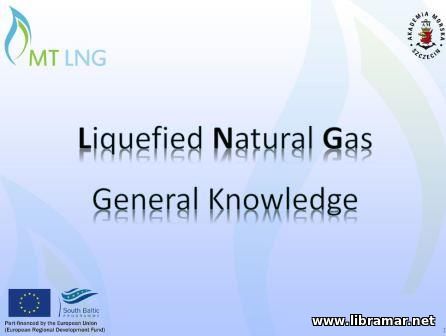 The natural gas are there in the rock reservoirs deep below the surface of the Earth and therefore under high pressure. They can exist being dissolved in the water or hydrocarbons, or in the free state. Same is the way they are produced from the geological formations. There are three quantities of the gases, namely their temperature, pressure and temperatures, and three major rules governing their behavior, i.e. Charles’ Law, Boyle’s Law, and Gay-Lussac’s Law.
The liquid natural gas trade chain starts with the exploration and production, treatment and liquefaction process, followed by its transportation, and concluded with the storage at final location and regasification. This compact document provides all information that everyone involved in maritime transportation of the LNG should be aware of in order to perform his or her duties in a safe manner.
To do that, they are definitely in need of having a good knowledge of the nature of gases and their technical characteristics, since the failure to know and understand same will eventually result in the unsafe working practice on board, leading to the dangerous and often even catastrophic consequences to the humans on board, vessel and the environment.
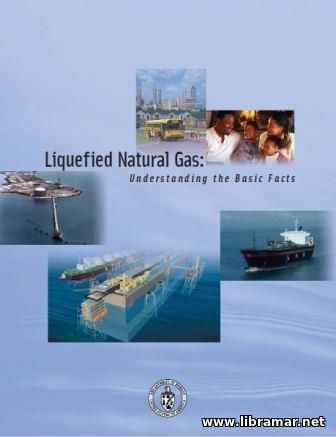 The materials contained in the pages of this compact yet informative report were provided by the Department of Energy of United States in cooperation with the NARUC, standing for the National Association of Regulatory Utility Commissioners. The publication gives some introductory information that shall be known by anyone engaged in the LNG industry in any way, including, of course, the maritime transportation of the liquefied gases.
Nowadays, the natural gas plays a critically important role in the energy supply, significantly contributing in the national environmental and economic plans. As we know, the liquefaction process has been developed and widely implemented in order to allow for easier transportation of the natural gas. Without it, the gas would never get delivered to the destination ports.
The main emphasis in the document has been placed on the United States; however the technical information can easily be applied elsewhere. The authors explain the growing demand of the country in the natural gas, current status of its imports, components making up the LNG chain, essentials of the natural gas production and liquefaction; of course, the safety and security aspects have also been covered in detail.
 The documented is prepared in the form of presentation and will be good for people entering the industry. The author covers the important areas in detail, while keeping the amount of text to a minimum, concentrating on the visual aids such as the illustrations and schemes. First of all, the basic information is given about the hydrocarbon industry and the role played by LNG.
Then, we proceed to the LNG chain and plant overview, and the offshore industry. There are slides devoted to the gasification process, composition of the natural gas, schematics of the gas treatment plant, as well as the typical liquid petroleum gas recovery in the baseload LNG plant, cascade cooling and the associated hazards.
The cryogenics has been dealt with, together with the domestic and industrial refrigeration, properties of the refrigerants, together with the technical aspects such as the insulation used, low temperature embrittlement of the materials, thermal stress, piping and pressure profile. The storage and transportation of the LNG are handles within the separate slides, and there are so many other interesting and important areas covered. The document can be used as a ready-to-use presentation when explaining the basics of the LNG.
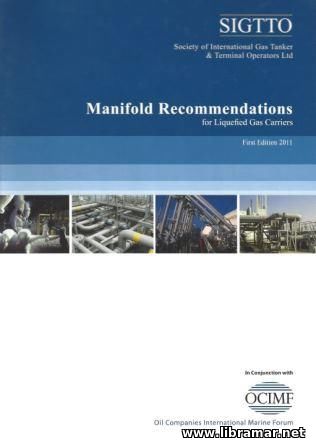 The present recommendations were written in order to provide industry with the single document containing the guidelines relating to the manifolds and strainers installed on board vessels carrying LNG and LPG cargoes, with the objective to promote the improvement of the safety of the operations and their efficiency. They are also aimed at providing assistance to the persons engaged in arranging the facilities in the jetties.
The content of the publication was thoroughly reviewed by the leading ship operators, professional naval architects, shipbuilders and manufacturers of the relevant shipboard equipment. The instructions and guidance provided here will be useful to the LNG/LPG ship owners, planners, operators and other parties involved. The document opens with the introduction where tits scope and purpose are defined, followed by the description of the categories of the LNG and LPG ships.
The cargo manifold position is covered in the following chapter together with the associated requirements. The strainers have been discussed in the separate section of the book. Apart from that, the authors have also dealt with the protection of the marine environment from the spills originating from the cargo manifolds, lighting of the cargo manifold area, service lines and many other topics, up to the safety requirements.
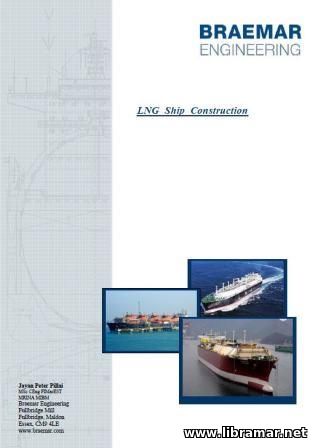 The publication was prepared by the LNG shipping industry professional and officially released by the world respected Braemar Engineering. The intention of the author was to give the guidance to all people I need for the LNG specific information that could be applied when performing their day to day duties. The book provides general introduction and historical background, followed with the explanation of the commonly used terms and basics of the vessel design.
Then, the reader will find the information about the shipbuilding contracts, types of the ships and their development. The materials used for construction of the vessels have been covered in a separate section together with the strength calculations. The next chapter is devoted to the regulatory framework including the industry rules, regulations, international conventions, codes etc.
In fact, the book will give all knowledge about the LNG ship construction at the shipyard, and the list of topics covered by the author includes but is not limited to the shipyard layout and material testing, design features, ship surveys and sea trials, steel cutting, welding, drydocking, and so many other activities. This is a perfect one for those wanting to know a bit more about the LNG ships.
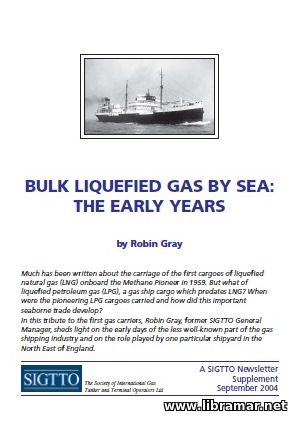 There have been so many publications about the carriage of the first cargoes of liquefied natural gas (LNG) onboard the Methane Pioneer in 1959. But what of liquefied petroleum gas (LPG), a gas ship cargo which predates LNG? When were the pioneering LPG cargoes carried and how did this important seaborne trade develop? In this tribute to the first gas carriers, Robin Gray, former SIGTTO General Manager, sheds light on the early days of the less well-known part of the gas shipping industry and on the role played by one particular shipyard in the North East of England.
This paper by Robin Gray, former general manager of SIGTTO, provides some historical background, touching the post-war development, addresses the major conversions of the vessels and famous conversion projects, applicable rules and patterns, liability insurance and cargo familiarity, material used for the construction and insulation of the cargo tanks, integrated gas distribution, propane loading problems, local gas trials, ethylene-related issues, training provided to the officers, fire protection tests, cooldown tanks, welding problems etc. Have a look into this document since the information contained in it is useful and practical.
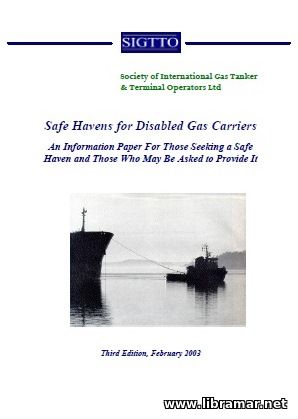 A ship in distress is usually in a condition where outside assistance is required to supplement the resources available on board to deal with the abnormal situation. A distress situation may have many facets ranging from disablement of power and/or steering to more fundamental damage to the hull or cargo system brought about by stress of weather, fire or other abnormal condition.
Thus, the safest place for a ship in distress is in sheltered waters where the necessary external assistance can be brought to bear to bring the situation under control. Once under control, plans can then be made for the long term rectification of the situation, damage or other factors causing the distress situation. In many cases, the ability to move the vessel to a safe, sheltered location is the most important single contribution that a port or coastal authority can make but this should be done in the full understanding of the risks that attach to the damaged condition of the ship. Liquefied gas tankers have unique construction features and their cargoes have unique properties that set them apart from other classes of ship and other categories of hazardous cargo.
This document describes the most important features of gas tankers and gas cargoes for those who may possibly become involved in seeking or granting a temporary refuge for such a ship, or be responsible for the contingency planning for such an event. This edition also includes details of actual incidents involving gas tankers.
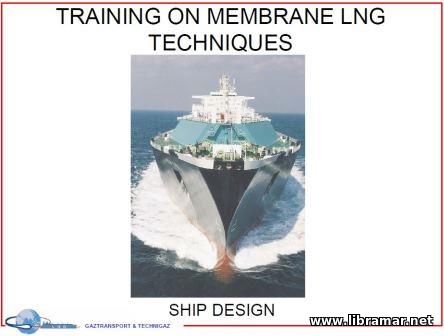 One more compact training course for the people working on board of or involved in the design and construction of the vessels transporting liquefied natural gases, i.e. so-called LNG carriers. There are four major sections in the present course. The first section introduces learners to the membrane LNG concept, particularly the integrated cargo tanks with cryogenic liners.
Then the readers proceed to the pre-concept stage where the job flowchart is presented, followed with the areas to be concentrated on during the design of the subject vessels, including selection of the main dimension and propulsion type, layout of the cargo tanks, weight distribution, general hull scantling, etc. The next area covered in the booklet is the loading – here, the four sample loading cases are presented.
The power estimation has been paid attention. There are several other important aspects covered in the volume including, but not limited to the selection of the steel grades for the hull construction, thermal analysis and boil-off rate, scantling requirements and others. The document will be a great supplementary visual training tool for those in need for the general idea of the LNG transportation.
|







